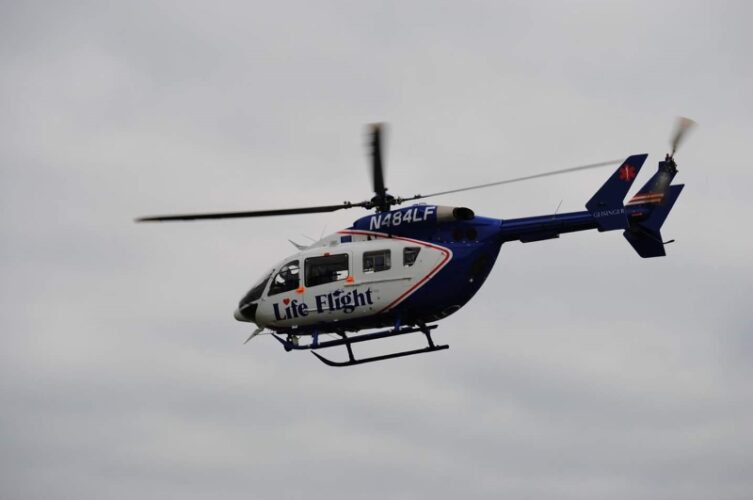So you’ve found yourself in a situation where medical transportation is necessary, but now you’re faced with the decision of whether to go with an air ambulance or a ground ambulance. It’s a tough choice, but fear not, because I’m here to help you navigate through it. There are a few key factors to consider when deciding between the two, such as the severity and urgency of the medical condition, the distance and accessibility of the destination, and the patient’s stability and comfort requirements. By weighing these factors and understanding the benefits and limitations of each option, you’ll be able to make an informed decision that ensures the best possible care for you or your loved one.
Distance and Time

Long distances
When considering medical transportation, one crucial factor to assess is the distance involved. In situations where the patient needs to travel a significant distance, air ambulances can provide a swift and efficient solution. Unlike ground ambulances, which are limited by their speed and road conditions, air ambulances are capable of covering long distances in a fraction of the time. This can be particularly beneficial for patients who require immediate medical attention.
Remote locations
In remote and hard-to-reach locations, such as rural areas or islands, air ambulances offer a lifeline for individuals in need of rapid medical evacuation. These areas often lack proper infrastructure and access to specialized medical facilities, making ground transportation challenging or even impossible. Air ambulances can overcome these obstacles by providing direct transportation from the remote location to a suitable medical facility, ensuring timely and appropriate care for the patient.
Traffic congestion
In densely populated areas, traffic congestion can significantly impede the timely arrival of ground ambulances, potentially delaying critical medical interventions. Air ambulances, on the other hand, can bypass traffic congestion by utilizing airspace, enabling them to swiftly reach the patient’s location and transport them to a medical facility without delay. This ability to avoid traffic bottlenecks can be crucial in life-threatening situations where every second counts.
Medical Condition and Urgency
Critical or life-threatening conditions
When dealing with critical or life-threatening medical conditions, time becomes a paramount concern. Air ambulances are specially equipped to handle such situations, providing expedited transportation to the nearest appropriate medical facility. By swiftly reaching the patient’s location and efficiently transferring them to a facility capable of delivering the necessary care, air ambulances offer a lifeline to those in desperate need of immediate medical attention.
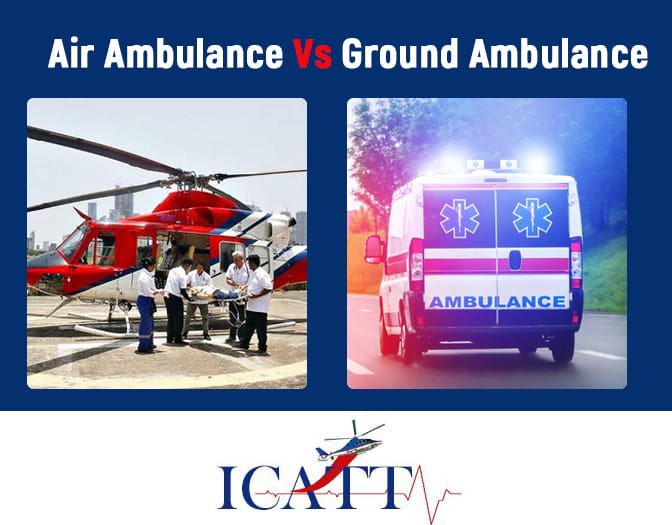
Time-sensitive medical procedures
Certain medical procedures require timely intervention and specialized facilities that may be limited in availability. Air ambulances can ensure that patients requiring such procedures are transported in the shortest possible time frame to a medical facility equipped to handle the specific intervention. This not only minimizes potential delays but also maximizes the chances of a successful outcome for the patient.
Need for specialized medical care
In some cases, patients may require specialized medical care that is only available at specific hospitals or healthcare facilities. Air ambulances can ensure that these patients are rapidly and safely transported to the designated facility, where they can receive the specialized care they need. This ability to transport patients to the appropriate medical facility, even over long distances, is a crucial advantage offered by air ambulances.
Accessibility and Terrain
Inaccessible areas
There are certain areas that are nearly or completely inaccessible by ground transport, such as remote islands, rugged terrains, or areas affected by natural disasters. In such situations, air ambulances become essential for reaching patients who cannot be easily accessed by road. The ability to land or hover in areas where traditional ambulances cannot venture allows air ambulances to provide critical medical care in even the most challenging and remote locations.
Rough or difficult terrain
In some cases, even if the destination is reachable by road, the terrain may be exceptionally challenging or impassable. For example, mountainous regions or areas with rough terrains can put immense strain on ground ambulances and lead to prolonged delays. Air ambulances, with their ability to traverse difficult terrains and transport patients swiftly, offer a viable solution in such scenarios. By bypassing challenging routes, they can ensure patients receive the care they need without unnecessary delays or risks.
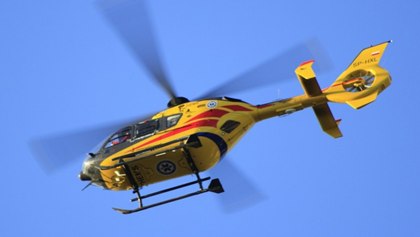
Natural disasters or emergencies
During natural disasters or emergencies, the ground transport infrastructure may be severely affected, making traditional ambulances unreliable or unavailable. Air ambulances prove invaluable in these situations, as they can swiftly intervene and provide medical assistance to affected individuals. The ability to evacuate patients from disaster-stricken areas quickly and safely can be a lifesaver in times of crisis, making air ambulances an essential component of emergency response systems.
Specialized Equipment and Staff
Availability of specialized medical equipment
Certain medical conditions necessitate access to specialized equipment that may be unavailable at local medical facilities. Air ambulances are equipped with state-of-the-art medical equipment to deliver advanced life support during transport. This allows patients to receive vital medical care while in transit, ensuring their stability and improving their chances of a positive outcome upon arrival at the destination facility.
Specialized medical staff or teams
Some patients require the expertise of specialized medical personnel during transportation. Air ambulances are staffed with highly trained medical professionals who have experience in handling critical care patients. These specialized teams can administer intensive care and monitor patients throughout the journey, providing the necessary medical attention and interventions required to ensure a safe and comfortable transfer.
Neonatal and pediatric cases
Transporting neonatal and pediatric patients often requires unique considerations and specialized care. Air ambulances are equipped to handle the specific needs of these fragile patients, including providing neonatal incubators, pediatric ventilators, and specialized medications. The medical personnel onboard air ambulances are trained in the intricacies of caring for infants and children during transport, ensuring their well-being throughout the journey.
Speed and Efficiency
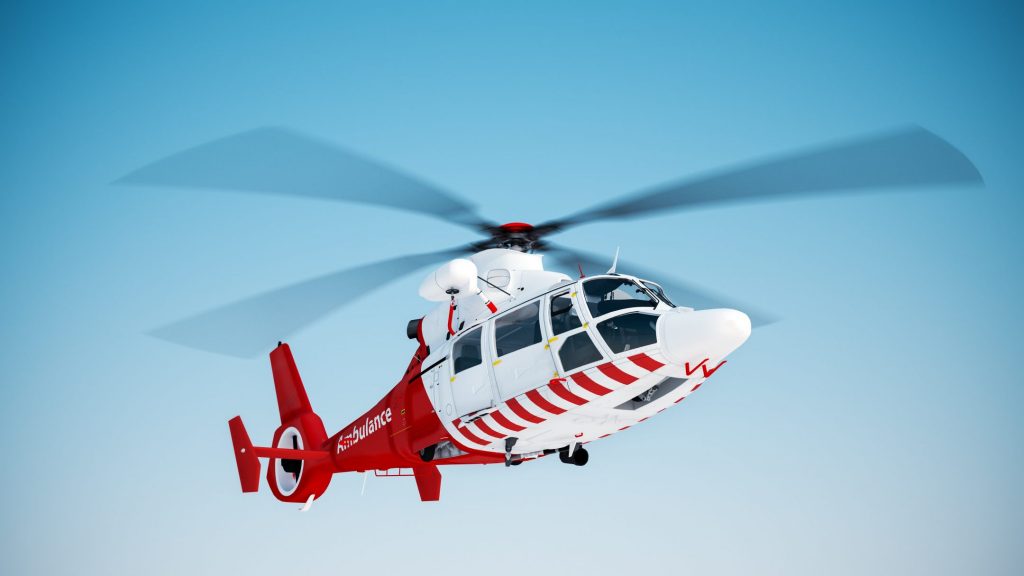
Faster response times
When time is of the essence, waiting for a ground ambulance to arrive can feel agonizingly slow. Air ambulances offer significantly faster response times, as they can be airborne and en route to the location within minutes. This prompt response time can be critical in emergencies where minutes may determine the outcome. By reaching the patient rapidly, air ambulances ensure that medical care can commence as soon as possible, potentially making all the difference in life-or-death situations.
Avoiding ground transportation delays
Ground ambulances can be subjected to unforeseen delays due to various factors, such as traffic, road closures, or mechanical issues. These delays can significantly impact patients’ overall care and lead to compromised outcomes. In contrast, air ambulances can bypass these potential delays altogether, as they are not reliant on the state of road networks or traffic conditions. By eliminating the uncertainties associated with ground transportation, air ambulances ensure a smooth and uninterrupted transfer for patients.
Ability to bypass traffic congestion
Traffic congestion is a common occurrence in urban areas, and it can have dire consequences when it impedes the arrival of medical assistance. Air ambulances have the advantage of being able to fly above congested roadways, avoiding the gridlock that might delay ground ambulances. By utilizing airspace, air ambulances can swiftly navigate through the sky and overcome traffic obstacles, ensuring that critical patients reach the medical facility in a timely manner.
Airborne Medical Care
In-flight medical treatment and monitoring
Air ambulances are equipped with medical equipment and staff capable of providing comprehensive in-flight medical treatment and monitoring. They can deliver emergency medical care, administer medications, perform necessary interventions, and monitor vital signs throughout the entire duration of the flight. This constant medical attention ensures that patients receive the necessary medical care while en route to the destination facility, enhancing their chances of a successful recovery.
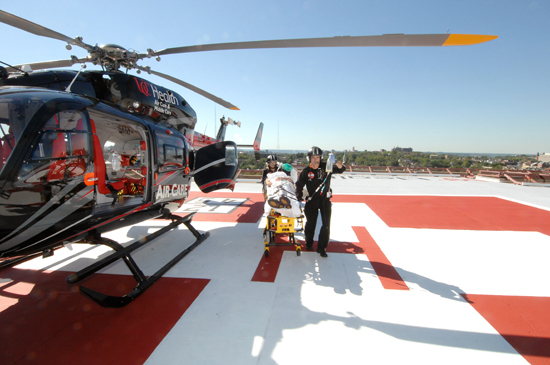
Ability to stabilize patients during transport
For critically ill or injured patients, the stability of their condition during transport is crucial. Air ambulances are equipped with advanced life support capabilities, enabling medical personnel to stabilize patients even while in transit. This includes providing advanced cardiac life support, respiratory support, and other critical medical interventions that may be necessary to maintain the patient’s stability until arrival at the medical facility.
Advanced life support capabilities
Air ambulances are equipped with state-of-the-art medical equipment and technologies that enable advanced life support capabilities during transport. These include cardiac monitors, defibrillators, ventilators, and other specialized equipment required to manage critical care patients. The presence of such advanced equipment onboard air ambulances ensures that patients receive the highest level of medical care and support during their journey, mirroring the capabilities of an intensive care unit.
Interfacility Transfers
Transporting patients between medical facilities
Interfacility transfers involve the transport of patients from one medical facility to another for various reasons, such as the need for specialized care or a higher level of treatment. Air ambulances excel in facilitating interfacility transfers, as they can rapidly transport patients between hospitals, clinics, or specialized healthcare centers. With their ability to cover long distances efficiently, air ambulances ensure that patients are transferred swiftly, allowing for seamless continuity of care.
Transferring critical care patients
Transferring critically ill or unstable patients from one medical facility to another requires specialized expertise and equipment. Air ambulances are equipped to handle such transfers, providing the necessary life support capabilities and medical staff to ensure the safe transportation of critical care patients. With the ability to transport patients in stable conditions, air ambulances contribute to facilitating the optimal transfer of critical care patients between medical facilities.
Specialized transfer requirements
In some cases, the transfer of patients may involve specific logistical challenges or medical requirements. Air ambulances are prepared to address these specialized transfer needs, such as accommodating patients with limited mobility or those requiring isolation due to contagious conditions. By tailoring the transportation process to meet unique patient needs, air ambulances provide a comprehensive and patient-centered approach to interfacility transfers.
Geographical Considerations
Islands or coastal areas
Air ambulances play a vital role in providing medical transport services to islands or coastal areas that may be isolated or lack comprehensive medical facilities. These locations often face challenges in accessing emergency medical care, especially when traditional ground ambulances cannot reach them. Air ambulances can swiftly reach these remote areas by utilizing aircraft and helicopters, ensuring that individuals in need of urgent medical attention receive the necessary care without delay.
Mountainous regions
Mountainous regions pose unique challenges for ground transportation due to the rugged terrain and lack of well-developed road networks. Air ambulances can navigate through the mountains, rapidly reaching patients in need of emergency medical care. Whether it is providing medical assistance to climbers, rescuing injured hikers, or transporting patients from mountainous regions to appropriate medical facilities, air ambulances offer a critical lifeline in ensuring access to timely medical care.
Areas with limited ground transport infrastructure
In certain areas, particularly in developing regions with limited ground transport infrastructure, air ambulances become a crucial component of the healthcare system. These areas may lack well-maintained roads or face constraints in the availability of ground ambulance services. Air ambulances can transcend these limitations, providing efficient medical transportation to individuals who would otherwise struggle to access adequate medical care. The ability to bypass ground transportation infrastructure gaps makes air ambulances an indispensable resource in such areas.
Weather Conditions
Extreme weather or natural disasters
In the face of extreme weather events or natural disasters, ground transportation can be severely impaired or entirely halted. Air ambulances are designed to operate in adverse weather conditions, allowing them to respond to emergencies when other forms of transportation are impeded. Whether it is hurricanes, floods, or blizzards, air ambulances can navigate through the challenging weather conditions to deliver life-saving medical interventions and evacuate those in need of urgent care.
Fog, heavy rain, or snow
Inclement weather, such as fog, heavy rain, or snow, can significantly impact the safety and efficiency of ground transportation. These adverse weather conditions may result in delays or even accidents during the transportation of patients. Air ambulances, equipped with advanced navigation systems and experienced pilots, can safely operate in these conditions. By utilizing their capability to fly above the weather, air ambulances mitigate the risks associated with adverse weather, ensuring the timely and secure transport of patients.
Unfavorable road conditions
Road conditions can be unpredictable, particularly in areas where maintenance is lacking or during periods of heavy traffic. Poor road conditions, such as potholes, unpaved roads, or construction zones, can impede the progress of ground ambulances, leading to delays in reaching patients. Air ambulances, free from the constraints of road conditions, offer a reliable alternative by flying directly to the patient’s location. By bypassing unfavorable road conditions, air ambulances reduce the risk of delays and ensure patients receive timely medical care.
International or Cross-border Transportation
Medical repatriation
Medical repatriation involves the transfer of patients from one country to another for medical reasons. Air ambulances play a vital role in facilitating international patient transfers, ensuring patients receive the necessary medical care in their home country or a preferred medical facility. By providing the necessary medical equipment, aviation resources, and personnel, air ambulances enable the safe and efficient repatriation of patients across borders.
Intercontinental patient transfers
In cases where patients require specialized medical treatment available in a different continent, air ambulances can bridge the geographical gap. Intercontinental patient transfers involve transporting patients over vast distances, sometimes across oceans or continents. With their long-range capabilities and the ability to provide ongoing medical care during the journey, air ambulances ensure that patients can access the required procedures or treatments available in distant locations.
Navigating international regulations
Transporting patients across international borders involves complex regulatory procedures and compliance requirements. Air ambulances are well-versed in navigating these legal and administrative frameworks, ensuring that patients’ international transfers are seamless and adhere to all necessary regulations. From coordinating with immigration authorities to obtaining necessary permits, air ambulance providers can facilitate the smooth transport of patients while ensuring compliance with international regulations and protocols.
In conclusion, while ground ambulances serve as the primary mode of medical transportation in many situations, there are several compelling reasons to choose air ambulances over their ground counterparts. Whether it is the need for rapid response times, access to specialized medical care, or the ability to overcome geographical barriers, air ambulances offer a critical resource in emergency medical services. By providing swift and efficient transport, advanced medical equipment and personnel, and the ability to navigate challenging conditions, air ambulances ensure that patients receive the highest level of care and the best possible chance for a positive medical outcome.



